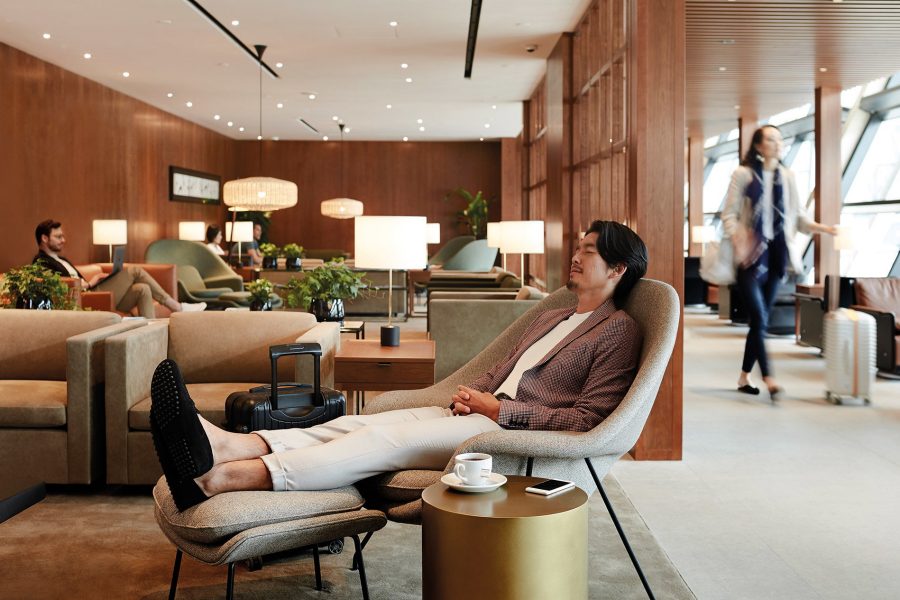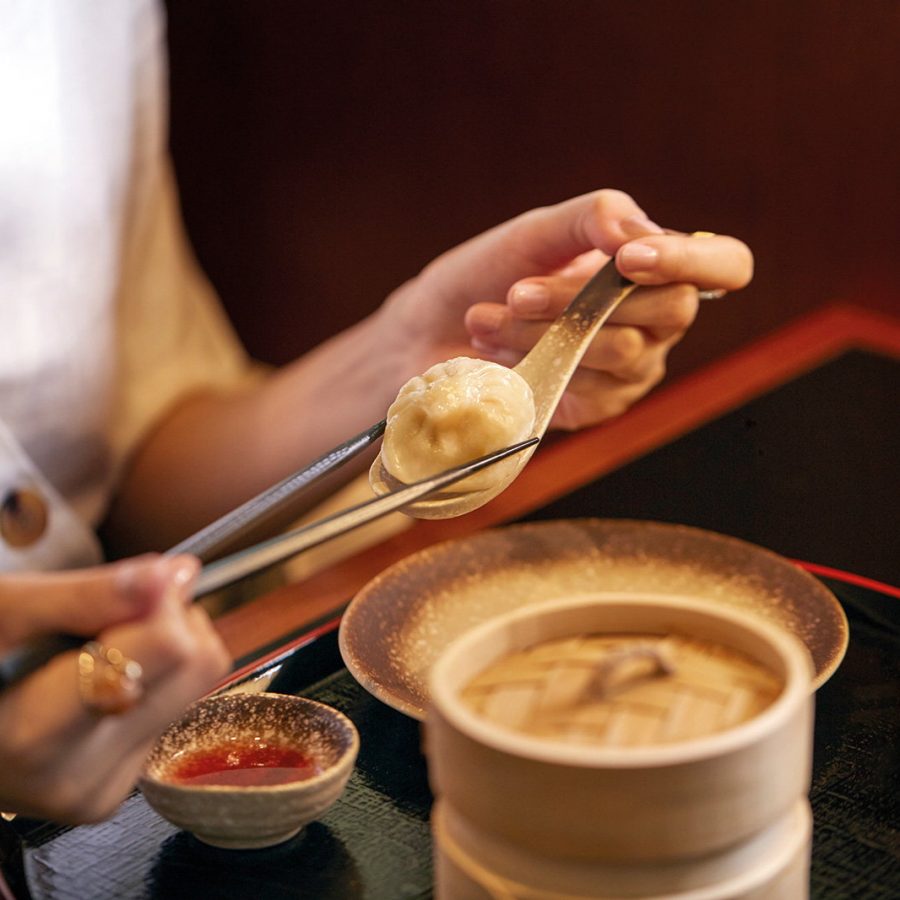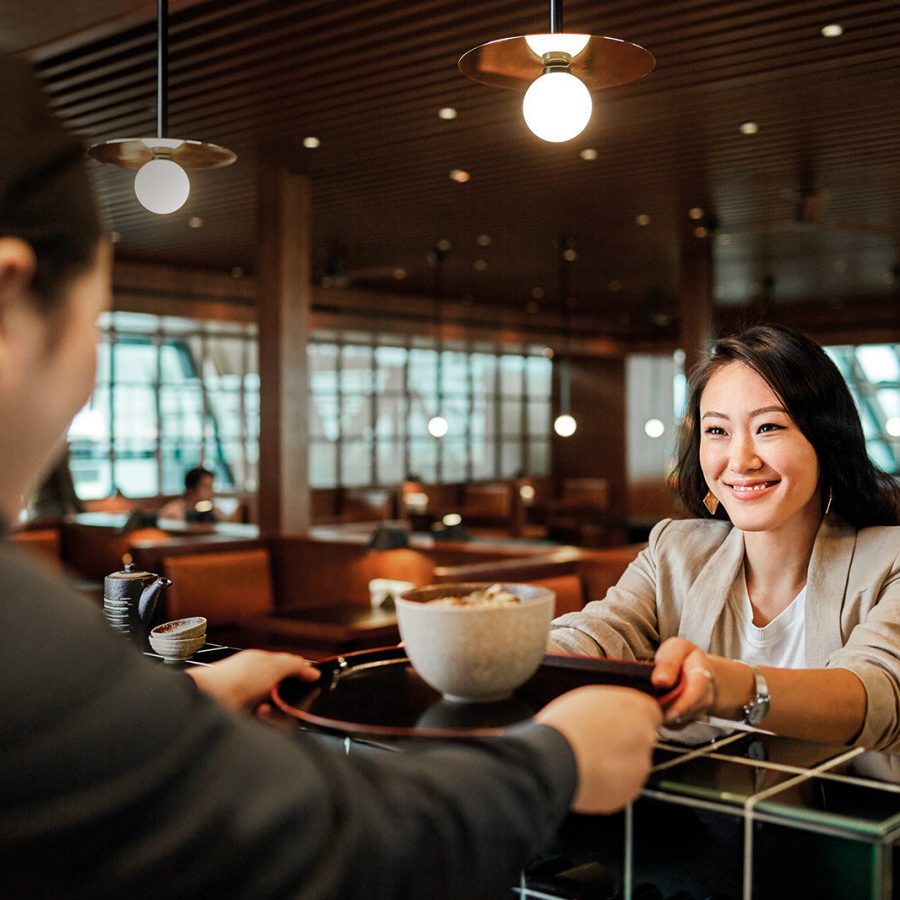Designer Ilse Crawford on the new Shanghai lounge

Serenity starts here. Or, more specifically, it starts in Terminal 2 at Shanghai Pudong International Airport . Pass through the discreetly guarded doors near Gate D69 and leave the hustle and bustle of the terminal behind. With a subtle waft of signature lounge fragrance Discover you have entered the tranquil surrounds of the newest lounge on the Cathay Pacific network – and one of the best lounges at this busy airport.
The new Shanghai lounge is based on the Studioilse blueprint, exemplified by The Pier at Hong Kong International Airport, and brings the London design company’s lounge concept to the Chinese mainland for the first time.

Studioilse has been directly responsible for designing eight of the new openings and refreshes in recent years, starting at Tokyo Haneda in 2014 and rolling out to both the First and Business Class facilities at The Pier in Hong Kong, and in Bangkok, Kuala Lumpur, Manila and Vancouver.
Other new openings, including The Deck at Hong Kong and the refreshed facility at Singapore, have continued to follow this design language without the agency’s direct involvement, as founder Ilse Crawford explains. ‘Starting in 2013 with The Pier lounges in Hong Kong, we were asked to define a design “blueprint” and pin down core feature elements for Cathay Pacific’s lounges worldwide.’

But the blueprint is not a cookie-cutter template; there is plenty of flexibility to incorporate cultural nuances from the local markets, as well as account for the physical size and shape limitations at various airports.
Shanghai, as Crawford explains, ‘is pretty close to the design blueprint, but obviously there are things that change at each place.’ In architectural terms, the lounge has had to take in the sweep of the airport’s roof, which is a feature in its own right, and so appears higher than at other lounges. Meanwhile those led by their stomachs will quickly notice individual flourishes such as the Noodle Bar serving Shanghai noodles and xiaolongbao soup-filled dumplings.
Elaine Lee, Cathay Pacific’s Head of Customer Experience and Design, Ground Product, explains that to keep the ‘Asian atmosphere’ of the Noodle Bar the team installed a false ceiling in that area, which in turn led to its own small design flourish. ‘We installed ceiling fans,’ she says. ‘They add an Asian design feature and provide a bit of a breeze.’

Another change has been triggered by reacting to cultural preferences as well as the physical reality of the Shanghai lounge having a larger-than-normal capacity of 305 travellers. ‘We have increased the dining space from the usual 40-50 per cent to 70 per cent at Shanghai,’ says Lee. ‘Part of that is to do with Asian culture. We like food and we will probably stay longer to eat.’ Patrons will also notice a change from pendant lighting to table lamps that illuminate the length of the dining tables.
Patterns observed at the Hong Kong lounges were also incorporated into the new designs. ‘At our Hong Kong lounges, most dining tables seat four’, explains Lee, ‘but we noticed that more customers travel alone or in pairs, and people were telling us that they couldn’t find a table because there weren’t enough seats. At the Shanghai Lounge Noodle Bar, all the tables are in pairs.’
It is these astute observations that have underpinned the lounge design from the outset. Crawford says of the furniture design for the concept: ‘One of the things we were interested in was how people sat. We took measurements of chairs where people were obviously comfortable – and noted when they weren’t. We spotted that people liked sitting diagonally and that they really liked swivel chairs to give them privacy – so we added those. We’ve also added a lovely interface so they can charge devices without crawling around the floor.’

‘You learn a lot by understanding what’s going on. It gives you tremendous insights, and then as a designer you have to translate it into something that enhances and accentuates the experience.’Ergonomics are part of that experience, but the other critical ingredients are wellbeing and serenity, which is derived from a sense of being looked after and feeling at home.
Crawford adds: ‘It’s a cliché but it’s true that the boundaries between the domestic and the public are blurred and people want this warmer, more informal environment. The institutional, soulless, corporate environments of old are just not relevant. Many lounge users today expect hospitality in the real sense of the word.’
And now, in the middle of the exceptionally busy Pudong airport, that’s exactly what people can expect.
More inspiration
Shanghai travel information
- China – the Chinese Mainland, Hong Kong SAR, Macao SAR and Taiwan Region
- Hong Kong SAR - English
- Chinese Mainland (China) - English
- Taiwan, China - English
- 香港特別行政區 - 繁體中文
- 中国內地 - 简体中文
- 中國台灣 - 繁體中文
- Africa
- South Africa - English
- Asia
- Bangladesh - English
- Korea - English
- Singapore - English
- Cambodia - English
- 한국 - 한국어
- Sri Lanka - English
- India - English
- Malaysia - English
- Thailand - English
- Indonesia - English
- Maldives - English
- ประเทศไทย - ภาษาไทย
- Indonesia - Bahasa Indonesia
- Myanmar - English
- Vietnam - English
- Japan - English
- Nepal - English
- Việt Nam - tiếng Việt
- 日本 - 日本語
- Philippines - English
- Australasia
- Australia - English
- New Zealand - English